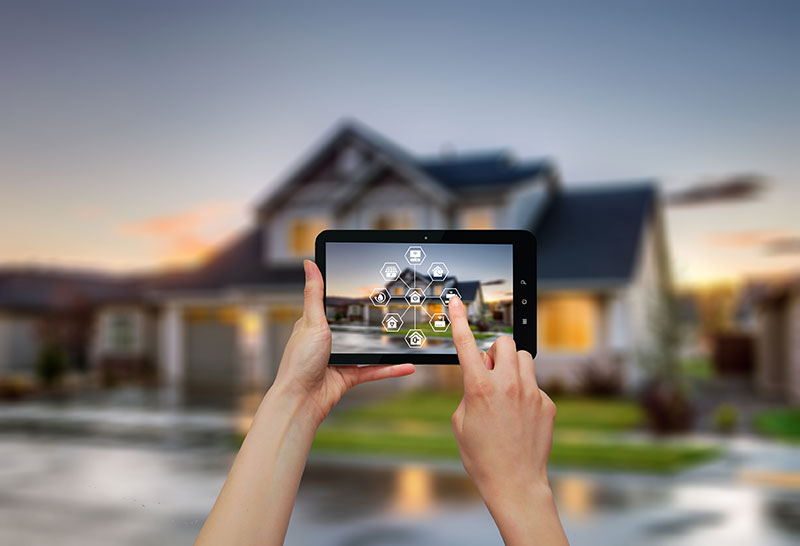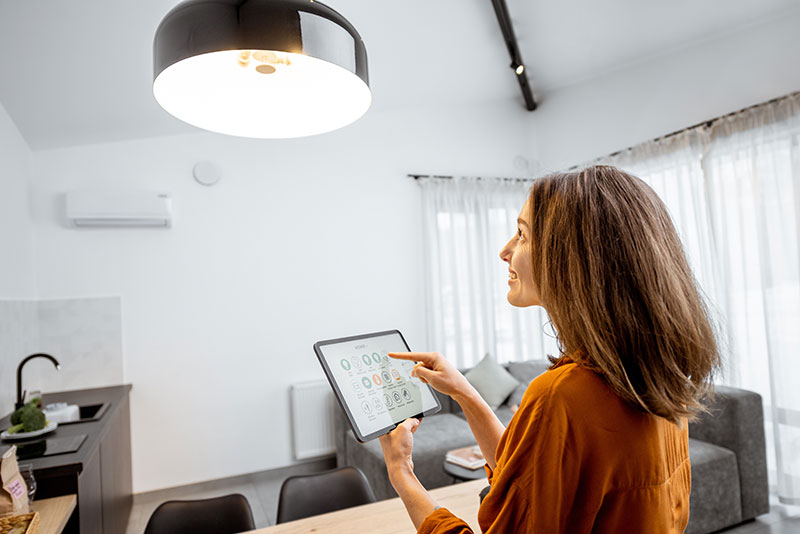Advertisement
If you’re eager to switch to a smart home, it’s believed to be no longer a challenging process. Today, almost every appliance or device in your home, including thermostats, air conditioners, lights, and entertainment systems, can connect to the Internet and be remotely controlled via a mobile device or smart speaker.
In recent years, smart homes have been creating a buzz, and it’s no surprise if you want to catch up with the trend. As web and wireless technology continue to evolve, one of its conveniences is allowing you to automate your home for better efficiency, comfort, and security.
Switching to a smart home has its share of benefits. If you want to maximize the benefits of having an automated house, you need to know the basics of building a connected smart home. Here are a few steps to help you get started on the right track.
- Learn How Smart Home Technology Works
If you’re eager to automate your home soon, you need to know how smart home technology works first. Always remember that the smart home industry is constantly evolving. You’ll find new products, programs, manufacturers, and protocols released almost every year.
With this in mind, you need to stay up-to-date with the available technology. If you want to switch to a smart home soon, checking out the latest smart home tech in Australia or your country would greatly help.
When your priority is to achieve energy efficiency and low maintenance, you need to look for smart appliances and devices with these features. Try to spend time reading product reviews from unbiased sources. If you want to get a good start in switching to a smart home, it begins by knowing what is available and practical to your budget.
- Determine What You Need

Today, if you’ll check the market, you’ll find a vast selection of smart appliances and devices to choose from. You might end up carried away in selecting the right products for your home. During the selection process, you should decide on the products you need the most.
With this next step, it’s best to start with residential lighting, security, and thermostat-all of which are crucial for any homeowner. These will serve as an excellent introductory point in selecting smart appliances for the kitchen, home entertainment, and bathroom.
- Smart lighting: If this is your initial attempt at switching to a smart home, it’s best to start with smart lighting. Most smart lighting systems function well without a central hub and can interact with other smart home elements.
- Smart thermostat: When it comes to comfort and energy efficiency, a smart thermostat is truly worth the investment. Aside from following a cooling and heating schedule when you’re at home, it can detect when you’re away, making the necessary adjustments to the home environment.
- Home security cameras: Having a home security system will allow you to monitor your home, especially if you’re away. There are indoor models to watch pets and children, while outdoor models will catch any potential burglars or serve as a deterrent in the first place.
- Smart smoke and carbon monoxide detectors: Most smart sensors can transmit a local alarm along with an alert to your smartphone and to those you authorize as a contact. In some smoke alarm models, they include emergency lights or an integrated smart speaker.
- Decide On A Budget Range
Whether you want a simple system or a complex one, you need to decide on your budget to help you figure out which smart home devices to invest in. When you have a budget, it’ll help you focus on making the right choice.
Remember that you’ll find energy-saving labels on most smart devices offered in the market today, but you need to double-check if these can help cut down on your monthly energy bills. Additionally, it’d be best to consider the maintenance costs you may incur in the long run.
- Check If Your Home Is Connected
Since smart devices and appliances communicate with one another, one of your priorities in making the switch is to ensure that they stay connected at all times. Make sure that you have a dependable and strong Wi-Fi signal readily available in your house and its closest proximities.
As a backup precaution in case of disruptions to your main Wi-Fi network, you can install ethernet cables throughout your home. Although wireless is more convenient these days, wired Internet is believed to be more reliable.
- Prioritize Security
Lastly, one of the reasons why homeowners switch to a smart home is to improve security. A smart home system utilizes the web to communicate and control different registered devices. With this in mind, you should always watch out for possible online security threats present.
It’s best to change the default logins and passwords on all your devices and regularly change them. Another precautionary measure is choosing a router with a hardware firewall and ensuring it stays active at all times. Overall, select reliable, branded products over the cheaper ones.
Conclusion
Once you’re eager to switch to a smart home, there are several considerations to ensure proper integration. With these steps in creating a connected smart home, it’ll serve as a guide to ensure a seamless transition to make your home energy efficient and chores convenient in the long run.

